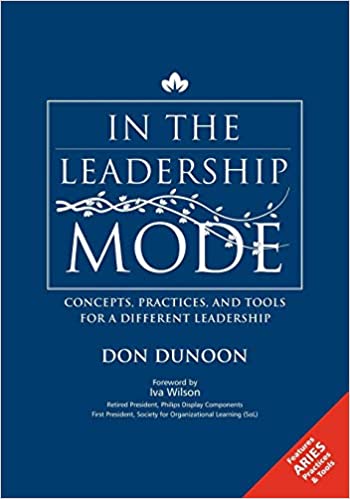How to Communicate Change in Church Policy During Chaotic Times by Priscilla Hammond

If you are you struggling to make decisions about policy and how to communicate those decisions to your church during this chaotic time, you are not alone. In this new normal of remote church, much consumes our day-to-day activities. It is difficult to plan and communicate future steps, sometimes even seemingly futile given the rapid changes occurring around us.
In his book In the Leadership Mode, Don Dunoon provides a helpful path forward, beginning with the difference between leadership and management communication. One is not better than the other. “There is a time for everything, and a season for every activity under the heavens,” both leading and managing.
There are times when a leader has to put on a management hat and focus on processes. Right now, many pastors are engaged in process management. The tasks of initiating online services and producing content each week have taken precedence. Management mode focuses on “things” – technology and systems, strategies and plans, and the measurement of how well those things are working. Completed tasks become a measure of productivity that help managers to feel effective. Management problems are solved through technology and a focus on the explicit problem at hand. Managers rely on their formal authority to get things done, delegating tasks and taking action. For example, in Exodus 18, Jethro gives great advice to Moses about delegation and decision-making.

There is a lot of management required during this time of change in the church, but leadership is needed even more. Dunoon has created a process for leading through contentious change, and one could argue that there is no time more contentious than the present. The rate of change has been increasing exponentially. It took over a millennium for the church to embrace the organ as a worship instrument, and another millennium for some churches to be convinced that it is not the only instrument that can be played in church.1 But along came the coronavirus, and it only took a few weeks for church leadership to figure out that the internet was a positive way to connect with parishioners.
Interestingly, many pastors during this time of Covid-exile say they most miss relationships, but relationships are often the one thing absent from our decisions about what to do next. If we operate in management mode, we may appear to be detached, problem-solving machines. In leadership mode, we comprehend that the problem isn’t technology, systems, or the need for a new plan, but the problem is perception, paradigms, and relationships. People don’t need to just understand the explicit problem (e.g., “we can’t meet in person”); change is needed in behavior and thinking. And if the church tries to change systems, people get defensive (if you don’t believe me, try changing from the organ to electric guitar), and defensive people defend systems.
Dunoon’s process to work through contentious change is ARIES: Attending, Reflecting, Inquiring, Expressing, and Synthesizing. It’s a relational process, and managers struggle with this because listening and reflecting doesn’t get the content produced for the next livestream. But if pastors spend some time processing what is going on within people instead of video content to push toward people, you will make better policy decisions that will be received, not without pushback, but definitely with more understanding.
Attending
Dunoon encourages us to set aside our achievement orientation and truly connect with others. Attending requires interaction. There is a setting aside of our agenda. Instead of producing a weekly church service, a daily devotional, and online small group interactions next week, could you have a town hall Zoom meeting where members can communicate what they’ve been going through and their perceptions about how the church could respond to this crisis? Could you make some calls? Attend to the perceptions of those in the church.
Reflecting
After we hear people, we need to reflect on what was unstated. Are there ways that people of faith are expected to act, in order not to be judged, that leave gaps in our depth of understanding of true feelings? People need to have a safe space to think, process, and continue the conversation. Is there a path you can create for congregants to communicate their fears to you? Can they tell you how they really feel about what might change about the church, moving forward? Create a safe space for those in the church to reflect.
Inquiring
Leaders often feel pressure to have all the answers. People come with us with questions, not for questions. Managers have answers because they have been given formal authority over systems that are static. But in chaotic times, we don’t always lead with answers; leaders ask questions. Contentious change means there is no perfect answer. There are myriad perspectives represented in the church, and by asking relational questions, shared meaning is developed. Inquire, listen, and allow the congregation to teach you and communicate back with you.
Expressing
In our sermons, the goal is to preach truth. But generally, pastors don’t just get up, read the lesson, and sit back down. We spend time fashioning our words in a way that will help the listener understand that truth. We give the history, the context, tell stories, and offer take-aways. We care enough about each person that we take the time to craft our message in order to persuade them of this truth. The message matters because the people hearing it matter, and this is the case for all church communications, not just Sunday morning. Expressing involves building a shared meaning, including our own views, so that individuals know they have been heard and are a part of the solution. Everyone’s view matters, including our own. Policy changes that result from this process are not dictated by managers, but rather develop as expressions of our collective fears, assumptions, and hopes that demonstrate a relationship with leadership.
Synthesizing
Task-focused decisions about things like systems and policies that are communicated from the top-down will be met with defensiveness. Even decisions that are made through relational processes as described above will not be received without pushback. There are no perfect answers, but when problems are solved together and people feel they’ve been heard, the solution can be communicated as a shared vision for moving forward. Ongoing discussions about the changes will continue in relationship because, even though everyone may not agree, they know there is a safe process for them to participate in church leadership.
1 See https://westfield.org/programs/curious-facts/ for fun facts about the organ in church.